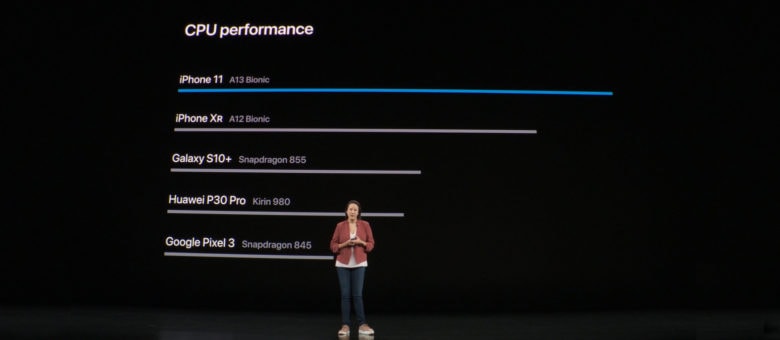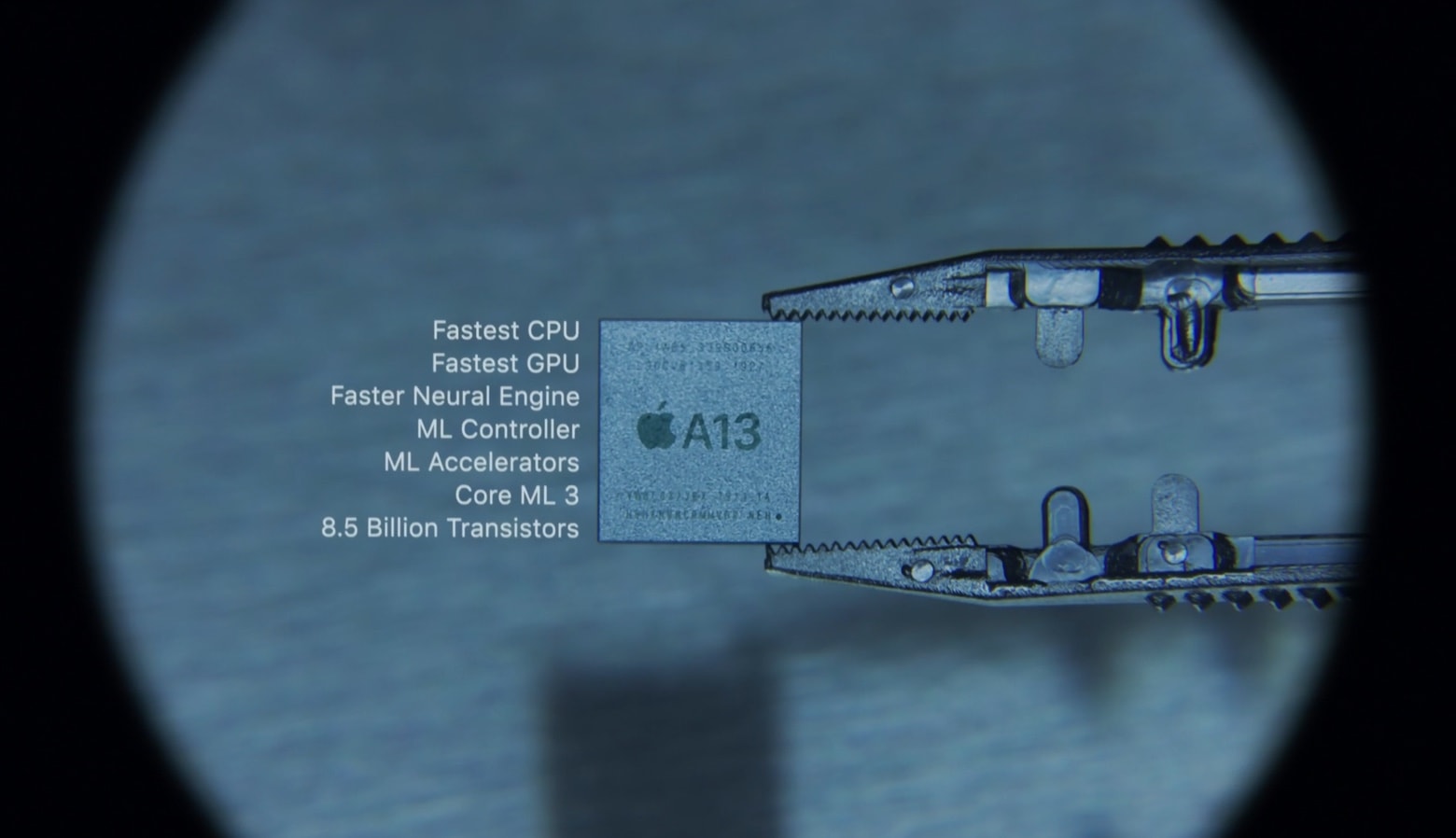It’s no surprise that the Apple A13 Bionic processor in all three iPhone 11 series models is faster than last year’s A12, but what many people might not be expecting is its energy efficiency helps to significantly increase the battery lives of the 2019 iOS handsets.
A13 Bionic brings a dual boost
Apple has some superlatives about its new processor, saying “The A13 is the fastest CPU ever in a smartphone” and also calling it “the fastest GPU ever in a smartphone.”
However, the company didn’t get very specific. It never reveals the clock speeds of its processors, and this one is no exception. And while it showed a pair of graphs to demonstrate how much fast its CPU and GPU are than the competition, these have no units.

Screenshot: Apple
Still, Apple did brag that the A13 Bionic is capable of 1 trillion operations per second.
Whatever the exact increase in performance, it doesn’t come at the cost of additional battery drain. Apple promises that the just-announced iPhone 11 will have a battery life that’s an hour longer than the iPhone XR.
And the improvement is even more dramatic for the iPhone 11 Pro series, with the company promising up to 5 additional hours when compared to last year’s XS series.
Saving power through efficient design
Apple calls the A13 Bionic it’s most efficient chip to date. Partially this is because it uses it uses TSMC’s 7nm production process, making much more power efficient than the Intel processors in Macs.
Also, this processor has six CPU cores, two high-performance ones and four power-efficient ones that Apple says are nevertheless speedy enough to use most of the time.
And the efficiency extends to all parts of the chip. Apple notes the Graphics Processing Unit (GPU) uses 40% less power, for example.


